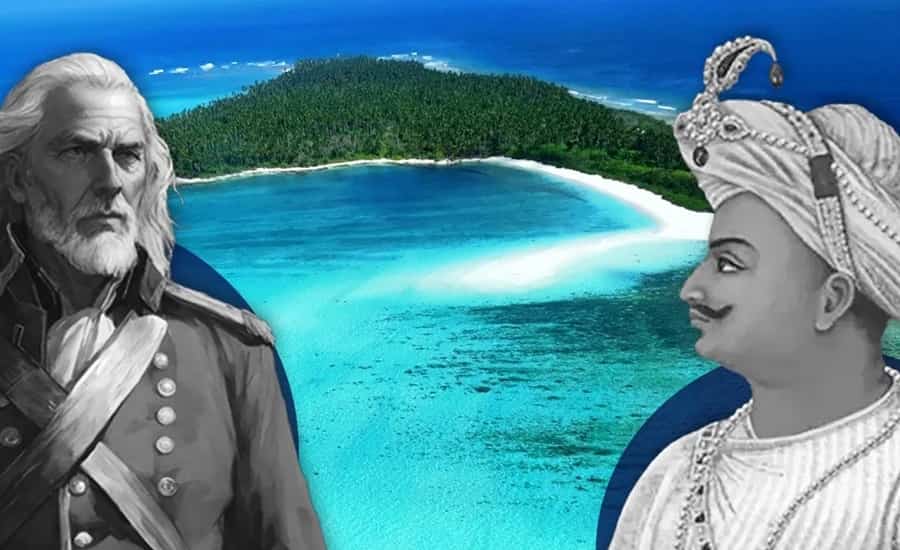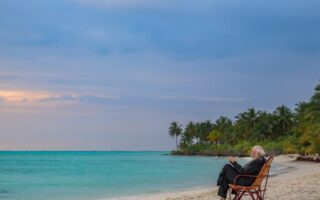The history of Lakshadweep, a cluster of islands nestled along the coast of Kerala, is a captivating tapestry of ancient legends, cultural influences, and foreign interactions. Spanning from the prehistoric era to its current status as a union territory of India, this history is shaped by tales of settlement, the spread of religions, European exploration, colonial rule, and the island’s strategic importance in the Indian Ocean.

Early History
The early history of Lakshadweep is shrouded in mystery, with the absence of written records necessitating reliance on local traditions and mythical tales. Legends attribute the islands’ first settlement to the period of Cheraman Perumal, the last king of Kerala. According to these stories, Cheraman Perumal, after converting to Islam, left his capital and eventually arrived on the shores of Mecca. Meanwhile, his disappearance prompted search parties to set sail, leading to the discovery and settlement of islands such as Amini, Kalpeni, Andrott, Kavaratti, and Agatti.
Islamic Influences
The arrival of Islam in Lakshadweep is traced back to 661 CE, as popular tradition holds that Ubaidullah brought the faith to the islands. His grave, a significant historical marker, is located on Andrott Island. The spread of Islam faced challenges, including opposition from local leaders. The legendary figure St. Ubaidullah, while propagating Islam, faced resistance but eventually succeeded in converting the people of Andrott and other islands.
Medieval Period
During the 11th century, the Late Cholas asserted control over Lakshadweep, expanding their rule after conquering parts of Kerala. The islands, strategically positioned in the Indian Ocean trade route, played a vital role in facilitating trade between the Middle East, Malabar Coast, Ceylon, and Southeast Asia. This period marked the islands’ emergence as a significant maritime hub.
Portuguese Rule
The 16th century saw the Portuguese dominate the seas between Ormus and the Malabar Coast. Vasco da Gama’s arrival in 1498 marked the beginning of Portuguese influence in Lakshadweep, referred to as Laquedivas by them. The Portuguese, driven by the desire to exploit coir production, assumed control of the archipelago until their expulsion in 1545. Subsequently, the islands were conferred as a jagir on the ruling family of the Cannanore Kingdom for protection against further Portuguese incursions.
British Era
In the late 18th century, the Aminidivi group of islands came under the rule of Tipu Sultan in 1787. The British took control after the Third Anglo-Mysore War, annexing the islands to the South Canara district. The remaining islands, under the suzerainty of the Arakkal family, faced administrative challenges leading to British intervention. By 1854, all the islands were under the administration of the British East India Company, attached to the Madras Presidency.
Independent India
The post-independence era reshaped Lakshadweep’s political landscape. During the reorganization of Indian states in 1956, the islands were separated from the Malabar District and constituted a separate union territory. Initially named Laccadive, Minicoy, and Amindivi Islands, it adopted the name Lakshadweep on November 1, 1973. The headquarters of the union territory shifted from Kozhikode to Kavaratti in 1964.
Strategic Importance and Security Considerations
The geographical location of Lakshadweep in the Indian Ocean made it strategically significant. Recognizing its role in safeguarding India’s vital shipping lanes to the Middle East, the Indian Navy established INS Dweeprakshak on Kavaratti Island. This naval base symbolizes the island’s growing relevance in India’s security considerations.
Foreign Travellers’ Accounts
The history of Lakshadweep finds mention in the accounts of foreign travellers such as Al Biruni, Abu Zayad, and Marco Polo. Their chronicles highlight the allure of the virgin green islands. The Vaylur inscription, dating back to Narasimha Varman II’s conquest, is an early testament to the islands’ historical significance. Raja Rajendra Chola, an influential Chola monarch, also added Lakshadweep to his territorial dominion.
Portuguese Invasion and Maritime Trade
The Portuguese invasion in the 16th century brought both opportunities and challenges. Lakshadweep became a noted hub of maritime trade, connecting the East and the West. However, this period also witnessed the islands being subjected to plunder, oppression, and tyranny. The finely spun coir, a sought-after commodity, led to conflicts with the Portuguese, culminating in acts of resistance and defiance by the islanders.
British Rule and Lakshadweep Regulation 1912
The British era introduced the Lakshadweep Regulation in 1912, diminishing the judicial authority of local chieftains, known as Amins. The islands, having transitioned from Portuguese to British rule, experienced a shift in administrative dynamics. The Lakshadweep Regulation 1912 reflected the British approach of exploiting profits without fully shouldering the responsibility of administration.
States Reorganization Act of 1956
The States Reorganization Act of 1956 marked a milestone, leading to the formation of Lakshadweep as a union territory. The erstwhile Laccadive Islands, with a rich history of being ruled by ancient Indian monarchs, Portuguese, and British colonizers, now became an integral part of the Indian subcontinent.
Conclusion
The history of Lakshadweep is a captivating journey through time, encompassing ancient legends, cultural shifts, foreign influences, and geopolitical transformations. From the mysterious origins and mythical tales to the impact of Buddhism, Islam, and European powers, the archipelago’s history is a mosaic of diverse elements. Today, as a union territory of India, Lakshadweep stands as a testament to resilience, cultural richness, and strategic importance in the Indian Ocean.
Suggested to Read:
- Travel Tips for an Unforgettable Lakshadweep Experience
- Best Things To Do In Lakshadweep
- Best Time to Visit Lakshadweep
- How to Reach Lakshadweep


